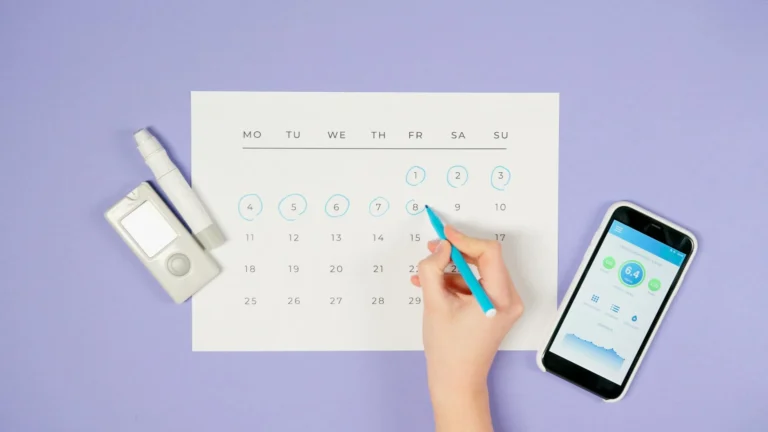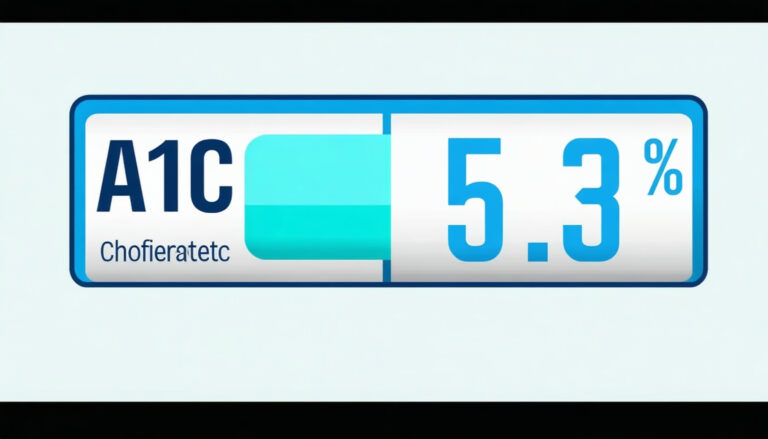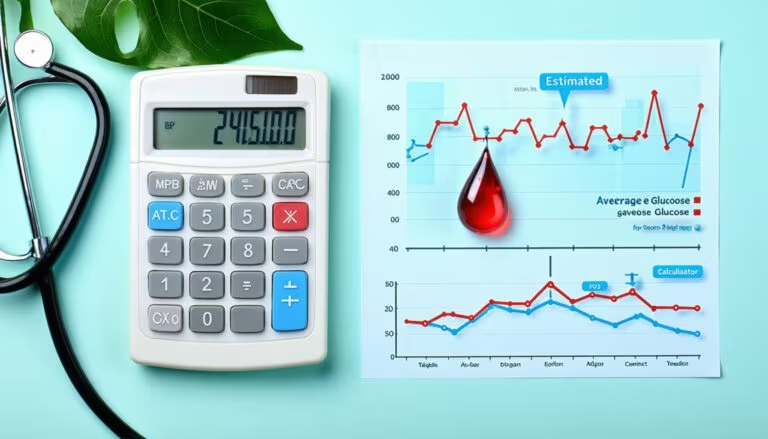Reducing A1C Naturally Guide
Discover tips for reducing A1C naturally! Learn about diet, exercise, and daily habits to manage your levels effectively.
Hey, What is A1C?
If you’re living with diabetes, getting a handle on your A1C level can be a game changer for your health. The A1C test is a simple blood test that looks at your average blood sugar levels over the past three months. It’s like a rearview mirror for your sugar history. This test can check for prediabetes, giving you a heads up on a potential shift towards Type 2 diabetes, heart disease, or even a stroke. It’s also handy for diagnosing diabetes and checking if your diabetes regimen is hitting the mark or needs tweaking.
Here’s a quick look at what those A1C levels mean:
| A1C Level (%) | Average Blood Sugar (mg/dL) | Diagnosis |
|---|---|---|
| Below 5.7 | Below 117 | Normal |
| 5.7 – 6.4 | 117 – 137 | Prediabetes |
| 6.5 or above | 137 and above | Diabetes |
Feel free to peek at our a1c calculator guide and a1c levels chart for more personalized insights.
Importance of A1C Testing
A1C testing gives you the big picture on blood sugar—keeping tabs on it can stop complications in their tracks. Here’s the scoop on why A1C tests are your friend:
- Spotting Prediabetes: Catching prediabetes early can motivate you to make lifestyle tweaks that stop Type 2 diabetes before it starts.
- Diagnosing Diabetes: It confirms what might already be in the air—elevated blood sugar sneaking up unnoticed.
- Treatment Check-up: If you’ve got diabetes, it’s like a progress report on how well your treatments are working.
Got your sights on reducing that A1C naturally? Here’s a few real-world tips:
- Talk it over with your doc to get a plan that tackles diabetes head-on.
- Opt for better lifestyle choices, like munching on balanced meals and getting regular sweat sessions.
- Shedding even a bit of weight—say 5%—can work wonders on controlling blood sugar.
- Meds can be a part of the picture too, just make sure to follow your doc’s orders and keep up with appointments.
This all-encompassing view of A1C, along with routinely keeping an eye on it, perhaps with a a1c reference range, can steer you towards naturally lowering that A1C level.
Factors Affecting A1C Levels
Keeping track of your A1C levels is a big deal if you’re managing diabetes. Lots of things can mess with those levels, like what you munch on, how you live your daily life, and whether or not you stick to your meds.
Dietary Impact on A1C
What you chow down on? Yeah, it seriously shakes up your A1C numbers. Having some kind of healthy food plan and sticking with it, that’s your golden ticket to reducing your A1C numbers naturally. Watching how much you eat and counting those carbs? It’s all part of the game.
Handy Food Tips:
- Plan Meals: Getting into meal planning can help your sugar levels stay on track.
- Watch the Portions: Keeping an eye on portion sizes means avoiding those unwanted sugar jumps.
- Count Carbs: Keeping track of those sneaky carbs helps keep your glucose levels steady.
For more eating tips, check out our a1c reference range guide.
Lifestyle Choices and A1C
The way you roll each day and how much you move doesn’t just keep your step count up but also helps manage A1C.
- Break a Sweat: Going for a little walk after lunch or shooting for about 150 minutes of activity a week? That can pull those A1C numbers down.
- Mix It Up: Changing up what you do keeps it fun and keeps you going, which is great news for glucose levels (American Diabetes Association).
Want to see how these lifestyle tweaks affect your A1C? Check out our a1c calculator section.
Medication and A1C
Drugs aren’t just there for show—they’re pretty handy when it comes to taming A1C levels.
- Diet Meets Meds: Folks who dove into low-carb diets saw some good changes in those fasting insulin levels and other health markers, proving that what you eat matters alongside what pills you’re popping.
- Stick to the Script: Sticking to the meds your doc put you on, whether they’re for fasting or post-meal sugars, really helps with A1C (Healthline).
Get more deets on normal a1c values and how staying on top of your medicines can keep your levels right where they need to be.
Figuring out how the food you eat, the way you live, and the meds you take work together to affect your A1C? That’s the trick to naturally keeping those levels in check. Dive into our a1c levels chart for extra help.
Strategies for Reducing A1C Naturally
Diet and Portion Control
So, you want to keep your A1C in check without popping a ton of pills? Managing what and how much you shove into your face is a great start. Plan your meals, don’t treat portion sizes like a dare, and keep an eye on those carbs if you want to see those A1C levels drop (Healthline).
- Balanced Meals: Think low-carb with a good dose of protein and healthy fat for taste.
- Meal Timing: Munch most of your carbs earlier in the day to keep diabetes at bay.
- Meal Composition: Getting the meal mojo—the right mix, timing, and order—can make a big difference in controlling diabetes (NCBI).
Here’s a bunch of foods to keep on your radar:
| Food Type | Examples |
|---|---|
| Proteins | Lean meats, fish, eggs |
| Low-Carb Vegetables | Broccoli, spinach, kale |
| Healthy Fats | Avocado, nuts, olive oil |
| Whole Grains (in moderation) | Quinoa, brown rice |
| Fruits (low sugar) | Berries, apples |
If you’re itching for more details on keeping your A1C in check, check our article on a1c levels chart.
Exercise for A1C Management
Let’s get physical! Regular exercise is like a magic wand for lowering A1C levels. Both getting your heart pumping with cardio and pumping iron can work wonders on reducing A1C (WebMD).
- Daily Walks: Give yourself a 20-minute stroll after lunch. You’ll thank me later.
- Weekly Activity: Shoot for about 150 minutes of moving your body every week.
- Exercise Types: Aeros like walking, jogging, or swimming, and lifting stuff—like, ya know, weights—are all good choices.
When you exercise, muscles naturally soak up sugar from the blood, which helps sugar levels dip quicker after meals.
Supplements and A1C
Want to talk supplements? Some might just help your A1C levels get on the right track. But hey, chat with your doc before trying anything new (WebMD).
- Berberine: Heard it’s got potential to do some good.
- Coenzyme Q10 (CoQ10): This little guy is packed with perks, including maybe giving your blood sugar a downward nudge.
- Cinnamon: Use it regularly, and it might just bring down those pesky A1C levels.
Seriously though, check with your healthcare provider to see if these are okay for you. For more ways to sneak in healthy habits, check out the a1c calculator tool and normal a1c values guide.
By weaving these natural steps into your life, you’re setting the stage for better A1C control and living your best life health-wise.
Monitoring and Keeping Tabs on A1C Levels
So you’ve started taking steps to lower A1C levels – that’s awesome. But you’re not done. Keeping an eye on them is like checking the speed on a highway to make sure you’re staying safe and sound. Here’s how I keep my A1C levels in check and why it’s become part of my routine.
Checking It Myself and Keeping a Record
In my treatment game plan, self-checkin’ at home is vital. A trusty blood glucose meter or other handy gadgets (CGM) help me figure out what to eat, how much to move, and what smart choices to make each day. This little digital companion tells me all I need about where my blood sugar’s at and if I’m hitting my A1C target. My meter speaks in milligrams of sugar per deciliter (mg/dL) or millimoles per liter (mmol/L) – sounds fancy, but it’s everybody’s language. (Mayo Clinic)
| Blood Sugar Level | Measurement Unit |
|---|---|
| Normal Range | 70-130 mg/dL |
| After Meal | <180 mg/dL |
| A1C Target | Below 7% |
Doc’s Two Cents
My doc lets me know when it’s time for my next A1C test, usually around twice a year if things are smooth sailing. But if there’s a hiccup in the plan, or something changes, those checks might come around more often. Regular check-ups with my doc aren’t just meet-n-greets; they keep me aligned on my path and ready for any tweaks we need to make ([American Diabetes Association]).
Pop by our A1C reference range for deets on when and how often you should be testing.
Custom Made Just for Me
My A1C results let my doc and me figure out our game plan – it’s like tailoring a suit that fits just right. This depends on the type of diabetes, the medicines I’m on, and how I’m nailing my goals. If my treatment plan takes a turn or if we play around with new meds, those A1C checks might happen more frequently. (Mayo Clinic)
Cooking up a personal management plan isn’t just choosing broccoli over fries; it’s a collaboration that brings my unique needs into focus with a little help from my healthcare provider. Wanna learn more about customizing this approach? Peek at our A1C management guide.
Adopting these tricks to reduce my A1C naturally makes me a pro at checking and holding steady my A1C levels, paving the way for better handling of my diabetes and living life healthier. Check out another great article on how to manage diabetes naturally without meds!







